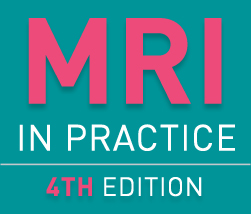SAQs - Chapter 3
1. What happens in a gradient coil that determines the polarity of a gradient?
The direction of the current through the gradient coil.
2. What geometry parameter does the frequency encoding gradient slope control?
The frequency FOV.
3. What operator function alters the number of lines in K space that are filled?
The phase matrix.
4. What are the units of K space?
Radians per cm.
5. What happens if frequencies are insufficiently sampled?
Aliasing.
6. Which area of K space contributes resolution?
Outer areas.
7. In which direction is K space traversal when frequency encoding is positive?
Left to right.
8. When scanning a brain in the sagittal plane, which gradients are used for slice selection, phase encoding and frequency encoding (in that order)? Assume the system to be a closed bore electromagnet.
X, Y and Z.
9. When is the phase encoding gradient applied in most pulse sequences?
As soon as possible after the excitation pulse has been switched off.
10. If the receive bandwidth is halved but the frequency matrix is retained, what happens to the TE and why does this occur?
Halving the receive bandwidth halves the sampling frequency so fewer data points are acquired per second. In order to maintain the frequency matrix, the acquisition window must be doubled and therefore the peak of the echo moves to occur in the middle of the longer window. Hence the TE increases.


